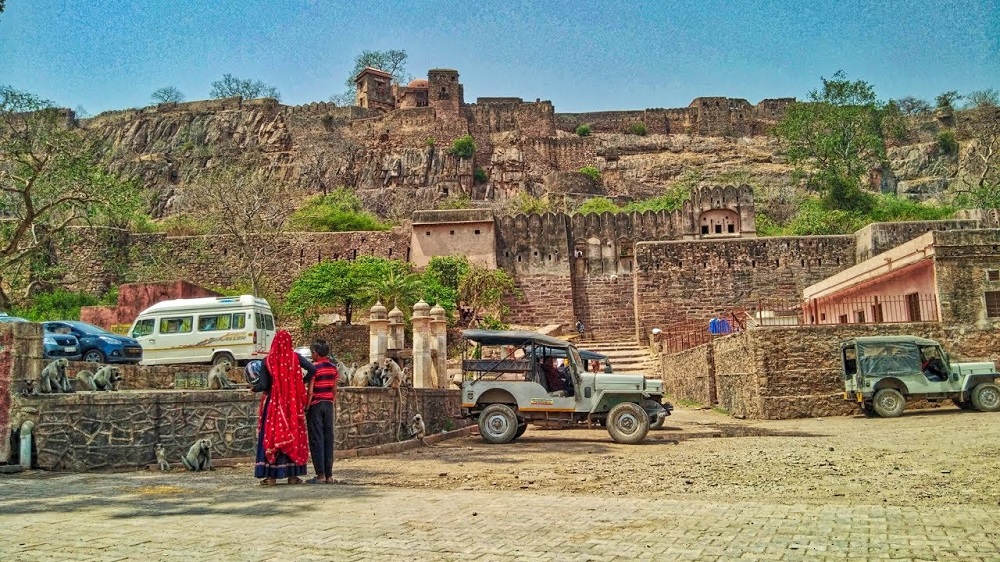Nestled within the rugged landscape of Rajasthan, Ranthambore Fort stands as a monumental testament to India’s glorious past. This UNESCO World Heritage Site is not only a symbol of architectural brilliance but also a treasure trove of fascinating myths and legends. These stories, passed down through generations, lend an air of mystique to this historical marvel. Located within Ranthambore National Park, the fort offers visitors a glimpse into the bygone era while sparking curiosity with its captivating tales.
A significant part of the allure lies in its connection to the famed Jeep Safari in Ranthambore, where the thrill of encountering wildlife is paired with an enriching historical experience. As the jungle whispers its secrets, the fort unveils a saga of kings, queens, and mystical beings.
The Origin of Ranthambore Fort: A Tale of Divine Intervention
One of the most intriguing legends surrounding Ranthambore Fort is its origin, linked to the revered sage Rishi Atri. It is believed that the site where the fort now stands was once a meditative retreat for the sage, blessed with divine protection. Legend has it that Lord Shiva himself appeared before the sage and granted him a boon, leading to the construction of a fortress imbued with celestial powers. This divine connection is said to explain the fort’s resilience against countless invasions throughout its history.
The fort’s association with deities and sages also underpins its spiritual significance. Pilgrims often visit the Trinetra Ganesh Temple within the fort, seeking blessings and recounting the tales of how this temple miraculously emerged during the reign of King Hamir.
King Hamir’s Legacy: The Betrayal That Shaped History
Ranthambore Fort’s history is incomplete without the story of King Hamir Dev, whose reign in the 14th century was marked by both prosperity and betrayal. Known for his valor and generosity, King Hamir was a devout ruler who upheld the principles of dharma. However, his tale took a tragic turn when he refused to bow to the Sultan of Delhi, Alauddin Khilji.
The story goes that Khilji sent an emissary to negotiate peace but plotted to infiltrate the fort through treachery. Despite Hamir’s gallant efforts, his trust in a traitorous general led to the fort’s fall. This betrayal left an indelible mark on the fort’s history, and tales of Hamir’s undying spirit are still narrated by locals. His steadfastness and courage are celebrated as symbols of Rajasthan’s indomitable heritage.
The Ghostly Whispers of the Past
Legends of supernatural occurrences further deepen the mystique of Ranthambore Fort. Locals speak of ghostly apparitions and eerie sounds echoing through the ancient walls, believed to be the spirits of soldiers who perished defending the fort. It is said that during moonlit nights, the cries of battle can still be heard, as if the fort relives its tumultuous history.
One of the most spine-chilling tales involves the queen of Ranthambore, who chose to commit jauhar (self-immolation) along with hundreds of women to preserve their honor during a siege. Their collective sacrifice is commemorated as an act of supreme courage, and their spirits are believed to guard the fort against evil forces.
Sacred Sanctuaries and Hidden Treasures
Ranthambore Fort is home to several temples and shrines, each with its own set of myths. Among these, the Trinetra Ganesh Temple holds a special place. Legend has it that Lord Ganesha appeared in King Hamir’s dream, assuring him of divine intervention during a time of crisis. Miraculously, an idol of Lord Ganesha was found within the fort the next day, and the temple was established in its honor. Devotees flock here to offer prayers, particularly during the Ganesh Chaturthi festival.
Another legend speaks of hidden treasures buried within the fort’s labyrinthine passages. While many have tried to uncover these riches, they are said to be guarded by divine forces, deterring treasure hunters with supernatural occurrences.
The Enigmatic Connection to Wildlife
The symbiotic relationship between Ranthambore Fort and its surrounding wilderness adds another layer to its charm. The fort, perched atop a hill, offers panoramic views of the Ranthambore National Park, a haven for wildlife enthusiasts. The tales of the fort are intricately woven with the stories of the forest, where tigers, leopards, and other creatures roam freely. Visitors staying at the Best resort in Ranthambore often hear accounts of the fort’s harmonious coexistence with nature, a rarity in historical narratives.
One such story recounts how the royal families of Ranthambore considered tigers to be the guardians of the fort. It is believed that the presence of these majestic beasts deters evil spirits and protects the sanctity of the land.
Conclusion: A Living Legend
Ranthambore Fort is not just a historical site; it is a living legend that continues to inspire awe and wonder. The mythical stories and tales surrounding the fort are a testament to the rich cultural tapestry of Rajasthan, blending history with folklore. For those seeking a journey that transcends time, exploring Ranthambore Fort is an unforgettable experience. Whether it’s the valor of King Hamir, the spiritual aura of its temples, or the enigmatic connection to its wilderness, every corner of the fort has a story to tell.

